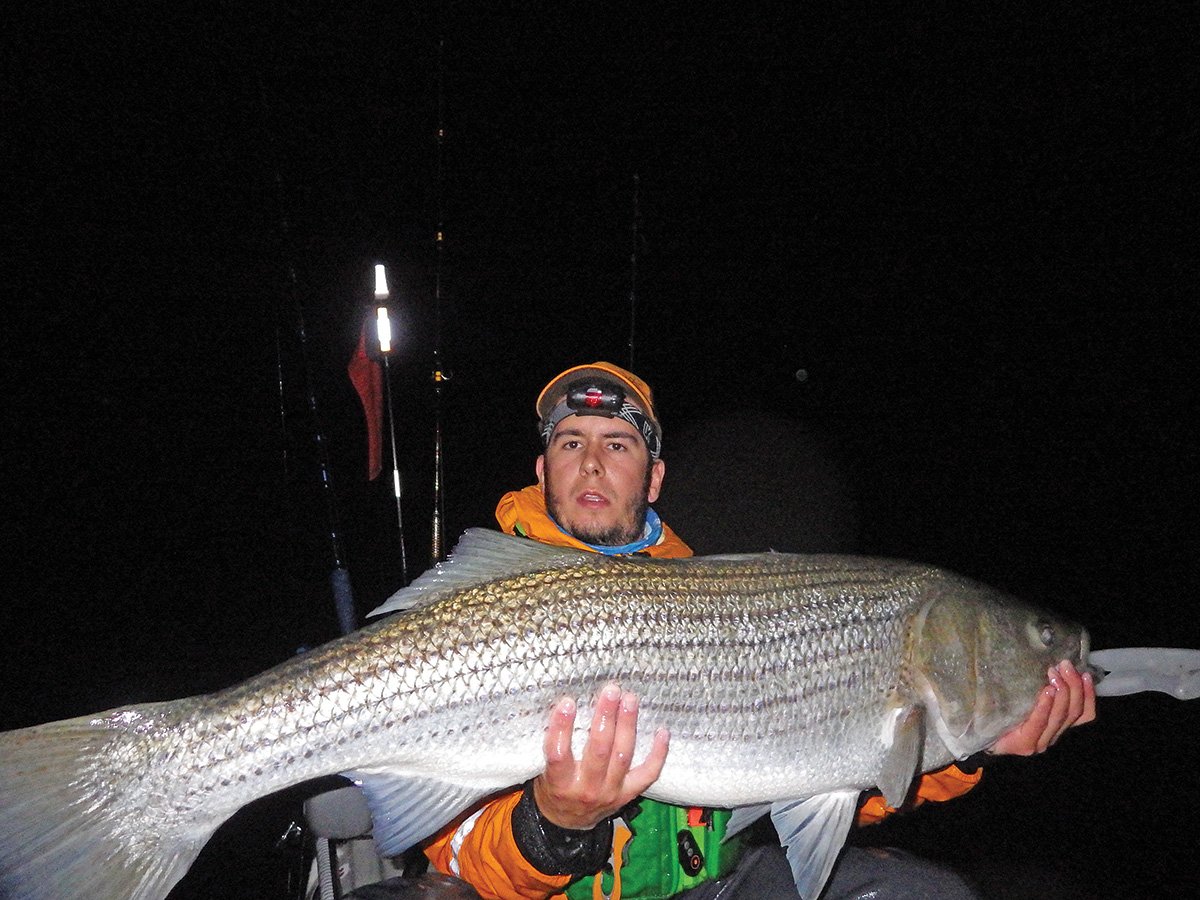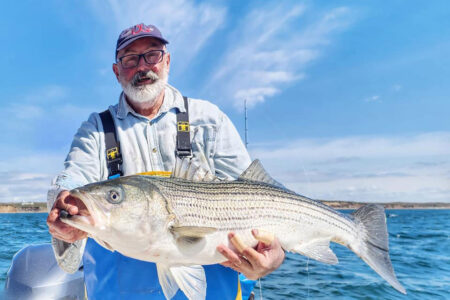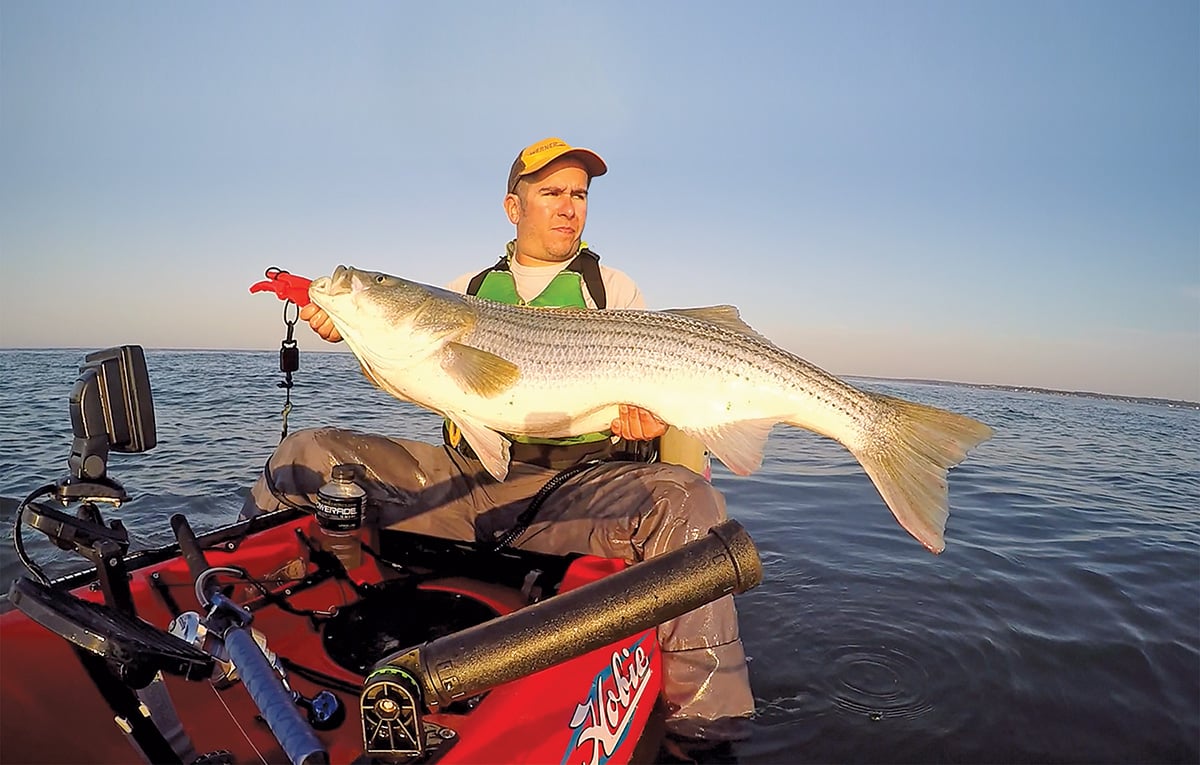
It is no secret that large striped bass love eels. Under the cover of darkness these fish lurk in shallow boulder fields along the shoreline looking for a meal. This creates a great opportunity to go large from a kayak, and trolling eels will help you do this.
Trolling live eels is a technique every kayak angler should have in their bag of tricks when targeting striped bass. Although it’s a very productive primary technique, it can be used when prospecting a new area or on the move between spots just as effectively. You can cover larger areas of water than you would by simply casting or drifting, which makes trolling eels very efficient. Essentially, in its basic form, you are dragging an eel behind your kayak but there is more to the technique than just this. This tactic can be done with a regular paddle kayak, but I prefer a pedal-drive kayak because it allows me to hold onto my rod while maneuvering the kayak. If you’re relatively new to kayak fishing for stripers be prepared to potentially catch a personal best if you take the time to truly learn this technique.
My setup has slowly evolved for this technique over the years. I prefer a 7-foot conventional rod with a star-drag reel. The rod/reel combo I’m currently using is a custom built Lamiglas 7-foot Triflex rod and a Daiwa Saltist star-drag reel. I build my own rods, which has allowed me over the years to tweak different things as well as try different blanks to get exactly what I’m looking for when trolling eels. The Lamiglas Triflex rods are extremely powerful and have plenty of backbone for turning a big fish, but still have a soft, sensitive tip for detecting light hits and keeping a fish hooked on a circle hook. A rod 7 to 7-1/2 feet long will give you plenty of length to also swing the bow with the rod tip if you need to rotate while fighting the fish.
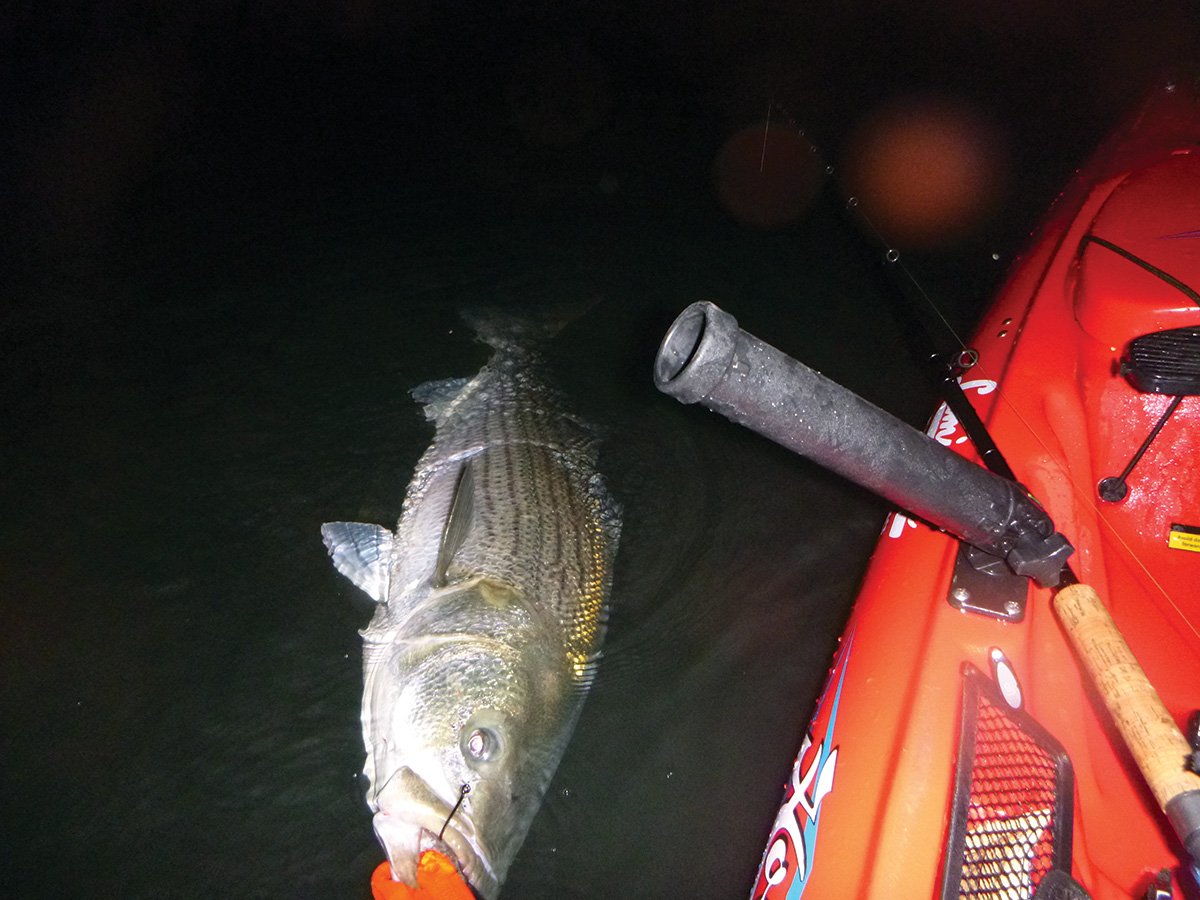
Over the years, I’ve bounced between star-drag and lever-drag reels for this application, but I keep going back to star drag. The star drag reel is fairly easy to cast if I decide I’m going to cast with this setup instead of troll. I can adjust the drag easily as needed throughout the fight, but when fully locked down it stays fairly consistent. This reel also has a strong clicker, which I use when I’m trolling the eel because I leave the reel in free-spool.
When it comes to tackle, some may view my tackle preference as overkill but it’s necessary when trying to pry a stubborn striped bass from the rocks. My main line is 65-pound braid. I prefer metered line because the color changes every 25 feet allowing me to keep track of how much line is out while trolling. I use a shock leader of 60- to 80-pound mono typically 12 to 15 feet long; this gives me a better chance if a striper drags me through jagged rocks. The shock leader is spliced to my braid with a uni-uni knot. My trolling rods are built using larger guides so that I can use this knot without fear of it getting hung up. My main leader is 3 to 4 feet of 50- to 60-pound fluorocarbon. On one end of the leader is a 130-pound Spro barrel swivel; the other end is a snelled 9/0 inline, straight-eye circle hook. It has a large enough gap to handle the largest of eels and still setup properly on the lip of the fish’s mouth. I’ve found snelled, straight-eye, inline circle hooks give you the most consistent hook-up rate for this application. I’m not a fan of J-hooks when fishing from the kayak since you can’t easily get the leverage needed to set the hook in the hard jaw of a large striped bass. Circle hooks also make for an easy release since they tend to gut hook fish less than J-hooks.
When trolling eels I look for rocky structure with moderate current. Water depths can run as shallow as 4 feet and as deep as 20 in most of the spots I fish. If I’m targeting deeper water I typically switch to a different technique, such as, 3-waying eels. If current is moving fairly fast or I’m targeting the deeper end of that range I add weight to my mono shock leader with either an egg sinker or rubber-core sinker. I usually keep a few 1/4-, 1/2-, and 1-once weights in my kayak crate to choose from and adjust as needed, but most of the time I leave the eel un-weighted.
The most productive time to troll an eel is generally within a few hours of the tide change. My targeted tide changes based on location, time of year, moon phase, water temp and wind direction, but I’m usually targeting the few hours leading up to slack and the first few hours after the tide change.
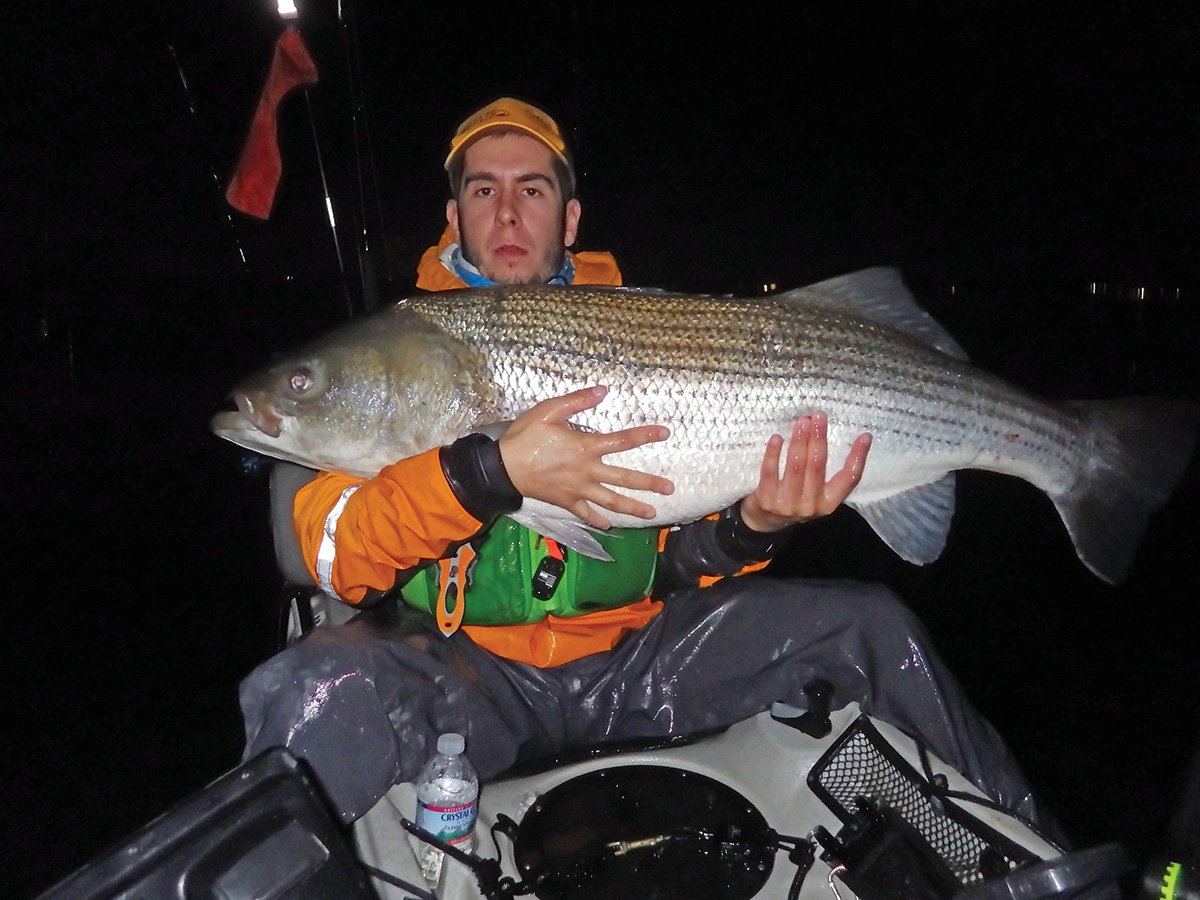
When in the kayak I store my eels in my center hatch between my legs. I have a small bucket in there that will hold 12 to 15 eels and is easily accessible. The bucket has holes in it so the slime can drain out, and I keep an ice pack on them so they stay cool and easy to manage. For trolling I like to hook them the same way I do for casting or 3-waying, which is up through the chin and out just behind an eye socket. This keeps them alive but also on the hook so they typically last a few fish.
I begin by casting the eel directly behind me and then pull out the rest of the line needed to reach my desired distance. Typically I troll eels 75 to 100 feet behind my kayak. Using the metered line makes it very easy to keep consistent. Since I fish out of a pedal-driven kayak I have the ability to hold my rod, which helps detect a nervous eel before getting a strike or if I pick up weeds. I can also give a quick twitch to the rod tip if I feel it starting to hang up on the bottom before it gets stuck in the rocks.
If I notice a lot of nervous eels but am not getting hits, I make adjustments as needed. I start by going faster, and then by approaching at a different angle through the area; if neither of those work then I let out even more line. If none of the above is working I either kill the eel I have on or switch to a dead eel. Sometimes this will out-fish live eels and has taken some very large fish.
I keep my speed between 1/2 to 1 mph, but I will go faster or slower as conditions dictate. I want to go fast enough to keep the eel moving and out of the rocks but slow enough that it isn’t dragging across the surface.
Once I detect a strike I point the rod tip towards the stern of my kayak, start pedaling faster, then engage the drag. Once I feel the weight of the fish I raise my rod tip and start reeling.
Be ready! A lot of times the bigger fish swim directly at the kayak and are easily lost when they cross under you. A trick I’ve found when this happens is to click the reel back into free spool with the clicker on to let them make the run under your kayak Once you reposition your kayak, reengage the drag. If you have a solid hook-up and do it quickly enough, the fish shouldn’t throw the hook.
Trolling eels has been a large part of my success with catching large striped bass over the years. It has been one of my most consistently-productive techniques for both quantity and size. If one area is slow I can transition over to another rock pile to look for feeding fish and cover an area much quicker than I ever could by casting or 3-waying.
When fishing areas I haven’t spent as much time in, especially out of state, I’ve always leaned towards starting out by trolling. It allows me to learn the area and figure out where the fish are concentrated.
Once I find active fish I continue to troll that specific spot but at times switch over to 3-waying or casting. Put the time in trolling eels and you could consistently start to catch larger fish.
